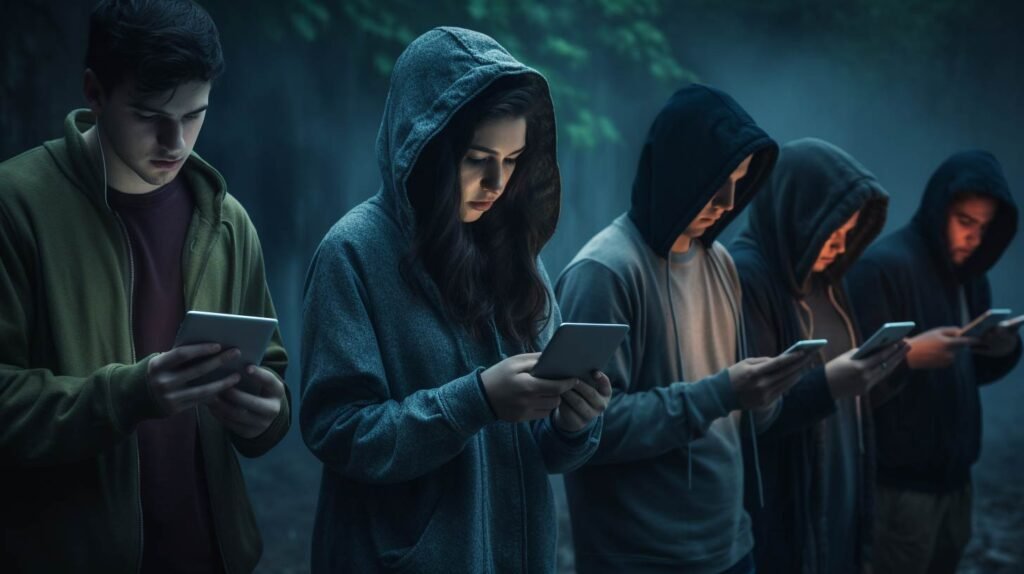Do you think social media is all about cute cat videos, dreamy vacation photos, and funny memes? Think again. Hidden between those viral posts and trending hashtags is something far more gripping and heroic. Get ready to uncover the lesser-known side of social media—a place where justice isn’t just a trending topic, but a real-life outcome. Here, online detectives and everyday heroes don’t just scroll; they act, they share, and they solve. Curious? You should be. Get ready for a ride that will open your eyes and keep you on the edge of your seat.
Let’s dive into some puzzles that found their missing pieces in the most unexpected corners of the internet. We’re talking about cold cases thawed by the warmth of collective curiosity, about mysteries unraveled one click, one share, one retweet at a time.
The Enigma of Grateful Doe

Picture it: Virginia, 1995. A devastating car crash leaves a young man’s body so mangled, he becomes unrecognizable. His pockets don’t have ID, only two Grateful Dead concert ticket stubs. Authorities, puzzled and intrigued, named him “Grateful Doe.” For years, his identity remained an enigma, a haunting question mark in the pile of unsolved cases. But then, the digital detectives of Websleuths—an online community of amateur sleuths hell-bent on solving the unsolvable. Armed with technology and a relentless pursuit for the truth, they took charge. A computer-generated image, meticulously crafted from his skull, was created. But it didn’t just stay in the police files. It went viral on Facebook, shared and re-shared until it reached the corners of the internet where it needed to be.
The Revelation by Social Media
Then, in a twist of fate—or perhaps, destiny—the image reached the eyes of Jason Callahan’s family. They recognized him instantly, their hearts sinking as they connected the dots. DNA tests were rushed, and soon enough, their worst fears were confirmed. It was Jason. He had told his mother he was off to a Grateful Dead concert but left out one crucial detail—the location. His family, left in the dark, assumed he had started a new life somewhere, blissfully unaware that he was not just missing, but tragically, irrevocably gone.
The case serves as a chilling reminder of the power of collective action online. It wasn’t just the police or a lone detective who solved this. It was a community of ordinary people who refused to let Grateful Doe remain a nameless face. And so, the enigma was solved, but at the cost of a family’s heartbreaking realization.
Twitter: The Digital Detective in a Vicious Hate Crime

In the heart of Philadelphia’s bustling Center City in September 2014, a group of individuals unleashed a brutal attack on two gay men. The assailants didn’t just stop at verbal abuse; they physically assaulted and robbed the victims. Security footage captured the faces of these perpetrators, but the grainy images left the police with more questions than answers.
The Unexpected Hero: “FanSince09” & The Breakthrough Moment
A Twitter user named “FanSince09,” known for his humorous takes on Philadelphia sports, decided to don the hat of an amateur detective. With a following of around 5,000 people at the time, he wielded enough influence to make a difference.
“FanSince09” shared on Twitter the surveillance video, urging his followers and the broader online community to help identify the culprits. The collective power of social media swung into action. Internet sleuths dissected every frame of the video, leading them to a group photograph that was the missing piece of the puzzle. This photo was the key to identifying a restaurant where the attackers had been dining earlier that night. A subsequent scan of Facebook’s “check-in” feature revealed the names of the individuals involved. In a stunning display of digital detective work, the identities of the criminals were uncovered in just two hours.
The Shakespearean Lottery: A Tale of Greed and Deception

In November 2006, Abraham Shakespeare, a 42-year-old laborer and truck driver, struck gold. He won a staggering $30 million from a lottery ticket he purchased at a convenience store in Frostproof, Florida. Opting for a lump sum of $17 million, Shakespeare relocated to a gated community and bought a million-dollar home. He was generous, helping family and friends who sought financial aid. But in April 2009, he vanished, leaving his loved ones puzzled and concerned. It wasn’t until November of that year that his family reported him missing.
DeeDee Moore’s Sinister Plot & the Online Sleuths
A woman with a shadowy aura, DeeDee Moore, presented herself to Shakespeare while assuming the identity of a financial advisor. She promised to manage his newfound wealth but had darker intentions. By January 2010, law enforcement discovered Shakespeare’s body buried under a concrete slab in Plant City, Florida. He had been shot twice in the chest with a .38-caliber pistol. Moore had not only stolen his winnings but had also taken his life.
Read also about the social media influencers caught in crime cases.
The police had their suspicions but lacked concrete evidence to convict Moore. That’s when the online community of Websleuths swung into action. These amateur detectives traced Moore’s IP address back to her office, providing the missing piece in the jigsaw puzzle of this murder case. This crucial evidence led to her arrest and subsequent life sentence without the possibility of parole.
The Jane Doe of Akron: A Journey from Obscurity to Identification

In 2016, Christina Scates, a college student at Cleveland State University, was engrossed in a genealogy project when she stumbled upon an unsettling entry in the Highland Park Cemetery records. The entry was back from 1975 and simply read, “Unknown white female bones.” Intrigued and somewhat disturbed by this discovery, Scates felt an overwhelming need to dig deeper. She took it upon herself to access police files and autopsy records, which were sparse and offered little information. Undeterred, she uploaded her findings to Reddit, hoping to shed light on this forgotten case.
The Digital Reconstruction
The case caught the attention of Carl Koppelman, a respected forensic artist known for his work in facial reconstruction. Koppelman used photos of the skull, which Scates had obtained through her meticulous research, to create a digital reconstruction of the woman’s face. Despite his initial efforts, the reconstruction gained little traction online. However, when Koppelman was contacted by law enforcement in Cuyahoga County for a different case, he took the opportunity to ask about the unidentified remains. It was then discovered that a clerical error had prevented the case from being entered into databases for missing and unidentified persons.
Once the error was corrected, the case was added to NamUs, the National Missing and Unidentified Persons System. Almost immediately, a potential match was identified. The remains were conclusively identified as Linda Pagano, a young woman who had disappeared in 1974 following an argument with her stepfather. She had been missing for 44 years, and her family had long given up hope of ever finding her.
The Family Reunion
Following the identification, Linda’s brother, Micheal Pagano, met Christina Scates in person to express his heartfelt gratitude. Linda’s remains were finally returned to her family and given a proper burial next to her late mother in Holy Cross Cemetery. The case, however, remains open as authorities continue to investigate the circumstances surrounding Linda’s death.
Social Media Saved the Day: The Steubenville Case of the Dark Party

In the summer of 2012, high school students in Steubenville, Ohio, gathered for an end-of-summer bash. The party was supposed to be a carefree celebration, but it took a horrifying turn. A young girl, who was not a student at Steubenville High School, became the victim of a sexual assault that involved multiple members of the school’s football team. The assault was not only brutal but also extensively documented by the perpetrators and bystanders on social media platforms like Instagram and Twitter.
Social Media as the Whistleblower
Local crime blogger Alexandria Goddard caught wind of the incident and began to dig deeper. She discovered tweets, Instagram posts, and even YouTube videos that not only implicated the football players but also suggested that local law enforcement was turning a blind eye, possibly due to the town’s deep-rooted football culture. Goddard’s blog posts went viral, catching the attention of national media and sparking outrage.
The victim’s family, armed with this newfound evidence, collected screenshots, videos, and other digital footprints that detailed the horrific events of that night. They compiled everything onto a flash drive and handed it over to the Steubenville police.
Within a week, two of the football players, Trent Mays and Ma’lik Richmond, were arrested and charged with rape. The case went to trial, and both were found guilty. Mays was sentenced to a minimum of two years in a juvenile correctional facility, while Richmond was sentenced to a minimum of one year. Both were also required to register as sex offenders.
Social media isn’t just a playground for selfies, memes, and viral dances. It’s a potent force, a digital frontier where justice can be served and mysteries unraveled. It’s a realm where everyday people turn into heroes, where the overlooked and forgotten find their voice, and where the seemingly unsolvable is cracked wide open.
Talking about solved crimes, have you heard about the 7 mysteries finally solved?

